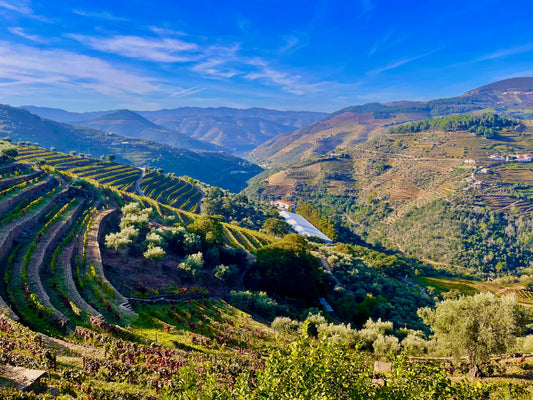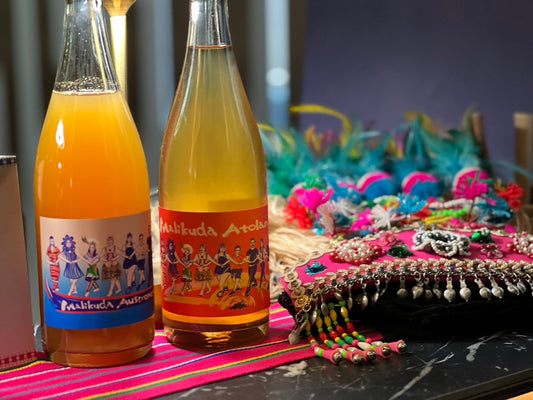|
What inspired you to create a book specifically about Priorat?
In 2003 I tasted a wine from the Priorat, a region in Spain I had never heard of. There was a flash of light in my head which revealed steep slopes of bush-like vines glistening in the sunlight. A few years later I visited the Priorat and discovered the vision was true: it was mountains and valleys with steep slopes called costers; the vines grew in slate, known as llicorella, and when the sunlight hit them just right they glowed. I discovered century-old vines growing like little trees, standing proud like sentinels in the traditional en vas way.
The wine world sometimes talks about sense of place. My experience of my first taste of the Priorat was that and more. It was a magic carpet to another world from my experience in California except I had not moved, it was all through my senses. The more I learned about the Priorat’s history, the time spent with the people and their vines, feeling the air move across my skin… I knew the story I wanted to tell was here.
Wine has the unique ability to take us to places we have never been before. Every bottle has a story about its life from the place it grew to the people who care for the vines, sometimes for generations. The Priorat can be the conduit to looking more deeply into all the wines we drink. All we have to do is surrender and listen with our senses.
How would you describe the role of photography in capturing the essence of a place like Priorat compared to written descriptions alone?
In my career as a graphic designer, I always communicated in a macro to micro way. People do not always take the time to read so you have to entice them with visual messages. Shape, colour, typography and photography all play a role. I will always use visual impressions first, for any topic whether it is Arctic well testing (yes, I designed a brochure for a company who did that in Alaska) or a wine. Once you draw people in with the visual presentation there is a hierarchy for written words. Titles, captions and mini stories provide quick reads which are hopefully compelling enough to entice readers to explore the micro details of the story.
I am not a technical photographer. In fact in the beginning I thought I would do what I had always done and hire someone to take the photos. But I realized that what I saw I was also feeling and I could not art direct that. With my left brain full of knowledge about the Priorat I could recognize what was taking form in my camera lens and know it made visual sense. It is the same way I curate any project - including my website, TerroirTalking.com and my Instagram account under the same name.
Visual storytelling is the macro story which draws people in. You will also notice that my photography is often abstract because I want viewers to find their own relationship with what they are seeing. My images are an invitation into an intimate world where I share what I see and feel.
Who do you most admire of the great landscape photographers?
I do not have a particular love of landscape over still life or natural light vs studio photography. In any form of creative expression what I admire the most is the internal vision. When you can feel that, it moves me. The same goes for film and music. Storytelling is giving form to the formless, things you sense but may not be able to define. As a storyteller, in whatever form, that is the creative challenge.
How long have you been writing about wine?
I have been working with the wine world since 1991, with wineries north and south in California. I had clients in other market segments but I was always drawn to wine. The great thing about graphic design is that it is like an ongoing liberal arts education. You must learn everything about your clients, their goals, their competition, their audience – and find the visual vocabulary that will communicate the message. When it came to wine I would learn all about the location of the vineyards, the varieties grown and the vision of the winemaker and proprietor. I always asked the winemakers what they saw when the tasted a grape and looked into its future as a wine. The answers defined their relationship with nature and that was the genesis of my interest in wine.
I have always kept a journal and processed every thought I had in writing, including my design projects. I would find the words to express the ideas to guide the exploration of the visuals. In those days I hired writers based on who had the right voice for the project but I often made them crazy with my input. More than one suggested I write the stories myself. Ethos Priorat presented the situation where I had no choice but to do so.
What is your first memory of wine?
Wine discovery has been more of a path for me, rather than specific epiphanies. But I can say that my journey began when I saw a bottle of 1987 Vichon from Napa Valley (a winery owned by Robert Mondavi which was closed in 1996). Back then labels were not very interesting, but this one had simple perfect typography and a squiggly hand-drawn green line which followed the silhouette of the mountain behind the vineyard. It made me want to know more. And I used my skills as a designer to do so.
I came to the wine business as a designer at just the right time. Projects always started with walks in the vineyards, listening to the winemakers and proprietors talk about their vision for their wines. Their stories about tributes to family members, the distinctions of the soil, the surroundings, texture of the landscape, the smells and colours inspired the identity for their wines long before I heard of terroir.
People ask me how I came to live in the Priorat. I used to say wine led me to it. Now I think it was maybe the voice of nature coming through wine that literally moved me and I have no doubt there are more adventures ahead.
Which do you think is the most underrated wine region?
There are wine regions we read volumes about. And there are others that are waiting to be discovered. Wine is a fickle business, it is always looking for the next new thing. And once a region is discovered it has to struggle to keep its story fresh and interesting while maintaining its purity.
I have just returned from Poland where Ethos Priorat was printed. I didn’t have a lot of extra time, but I did go to a restaurant in Warsaw called Zrodlo (which means source) for dinner. Adrian Gorniak, the owner and one of Poland’s top sommeliers, kindly gave me a taste of every Polish wine they had by the glass including a sparkling wine, an exciting array of whites from classics like Riesling and Pinot Gris to hybrids like Johanniter and Jutrzenka, and reds like Rondo, Zweigelt and Pinot Noir. Adrian was wired with enthusiasm for all that Poland has to offer, including a menu with a modern approach to culinary traditions, using seasonal ingredients from the countryside. I had no idea that Poland has some 40 varieties of apple, fresh fish from an extensive chain of sea-like lakes, forests full of edibles and a wine heritage that goes back to the 11th century (though Communism has left a legacy to overcome). I will go back to explore their vineyards as soon as I can – it’s not only underrated but truly ripe for discovery.
There are so many places I have not been to yet and want to know better, on every continent. My interest will always be about the relationship of people with their vines, the older the viticultural heritage the better.
If you had to drink wine from one region for the rest of your life, what would it be?
Priorat. I love being able to sense the difference between a south-facing vineyard (hot rocks) or a north-facing vineyard (wet rocks). I used to like Carinyena the best and thought maybe it was my wild side making a connection with its own character. But these days I am finding I enjoy Garnatxa more and I am still exploring if it has to do with how the wines are being made 20 years later or something in me has surrendered to a gentler being. And now there are more white wines being made with varieties like Carinyena Blanc and Grenache Gris. And elaboration techniques recalling the ancestral Brisat (a skin contact white). It is very exciting. It’s impossible to get tired of drinking Priorat. Though I do love Riesling, Pinot Gris, Pinot Noir, Cinsault, Xinomavro and pretty much any wine from everywhere as long as it is made with integrity and respect for nature.
Who is/was your mentor?
I had some amazing design teachers like Michael Vanderbyl and Tom Ingalls who taught me about the importance of symbols and the historical relevance of typography. And I had some amazing clients who took a chance on me when I took my skills as a designer into the world of wine. Through those projects I was able to embark on this journey. The people of the Priorat all shared their lives with me. Their trust in me is what I consider to be the most precious gift in life. And people like Andrew Jefford and Tamlyn Currin and the Académie du Vin Library have helped me believe my vision has value.
What would you have done differently?
I do not believe in regret. I make every decision with as much mindfulness as I can. After that, I believe everything happens for a reason and if something goes wrong there is lesson in it, so even the seemingly bad things are good too.
If a handbag can be worth £30,000, then so can a wine. Discuss
I get asked a lot if Alvaro Palacios’ iconic wine, L’Ermita, is so special (retail is more than €1000). Perhaps the question comes with a bit of envy. But the reality is Alvaro’s success has brought fame to the entire region. If I had €1000 to spend on a bottle of wine I would do it without question because the experience would be worth it - whatever it was.
But if I had a lot of extra money lying around my first priority would be to fund innovation that will save the planet and make people realize this matter cannot wait. In the meantime I do what I can to remind people with my words and deeds that compassion for each other and caring for nature matters.
Which is more important in a wine, aroma or texture?
You cannot separate them. Smell, sip and savour – revel in the story the wine has to tell.
What’s your motto?
Try everything once. No regrets. No being afraid. And listen, the wine is talking! |



